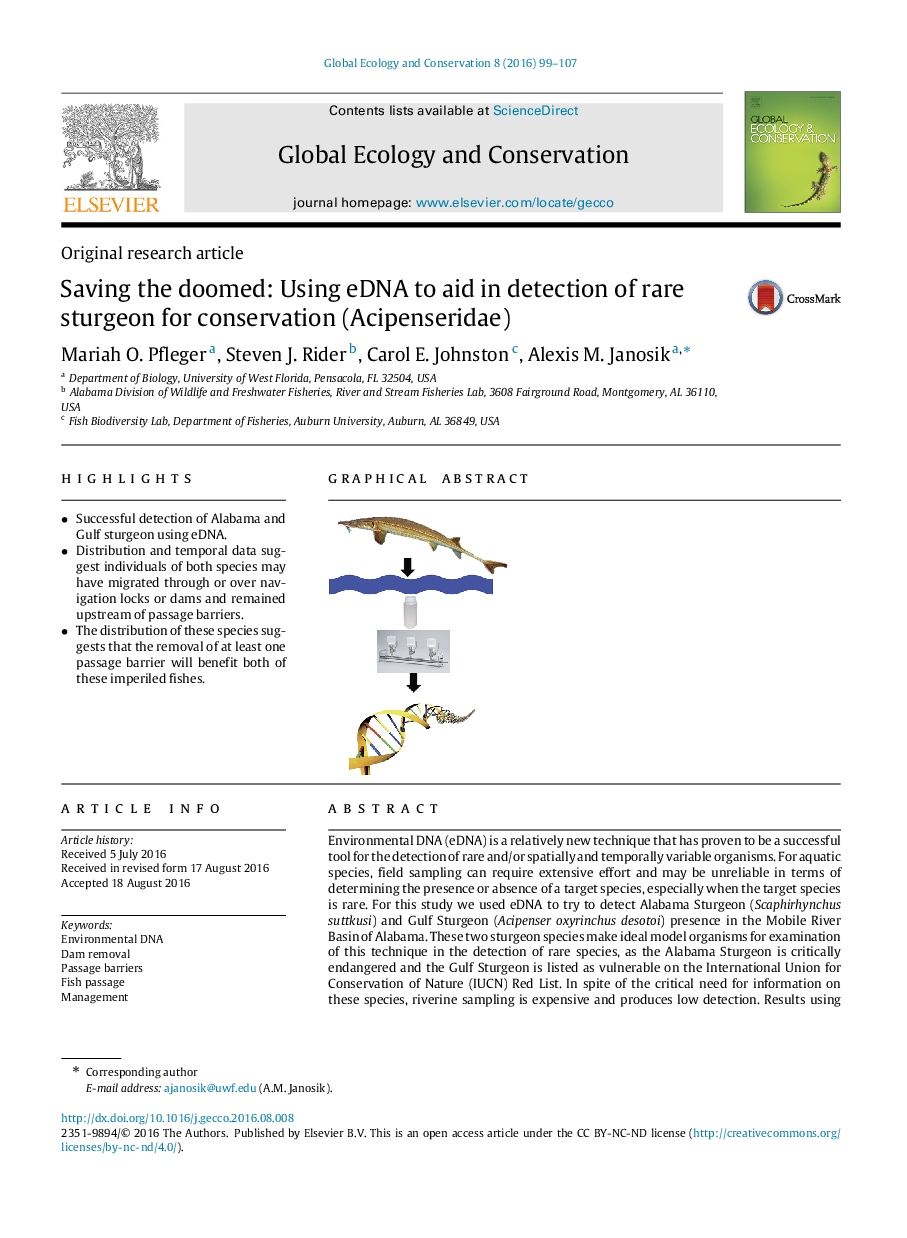| کد مقاله | کد نشریه | سال انتشار | مقاله انگلیسی | نسخه تمام متن |
|---|---|---|---|---|
| 4379436 | 1617659 | 2016 | 9 صفحه PDF | دانلود رایگان |
•
• Successful detection of Alabama and Gulf sturgeon using eDNA.
•
• Distribution and temporal data suggest individuals of both species may have migrated through or over navigation locks or dams and remained upstream of passage barriers.
•
• The distribution of these species suggests that the removal of at least one passage barrier will benefit both of these imperiled fishes.
Environmental DNA (eDNA) is a relatively new technique that has proven to be a successful tool for the detection of rare and/or spatially and temporally variable organisms. For aquatic species, field sampling can require extensive effort and may be unreliable in terms of determining the presence or absence of a target species, especially when the target species is rare. For this study we used eDNA to try to detect Alabama Sturgeon (Scaphirhynchus suttkusi) and Gulf Sturgeon (Acipenser oxyrinchus desotoi) presence in the Mobile River Basin of Alabama. These two sturgeon species make ideal model organisms for examination of this technique in the detection of rare species, as the Alabama Sturgeon is critically endangered and the Gulf Sturgeon is listed as vulnerable on the International Union for Conservation of Nature (IUCN) Red List. In spite of the critical need for information on these species, riverine sampling is expensive and produces low detection. Results using eDNA have revealed temporally logical, positive detections of Alabama and Gulf sturgeon throughout the Mobile River Basin sites included in this study. Successful detection of these species could reveal vital information such as understanding of habitat use for management purposes as well as identify specific localities for field sampling. Removal of at least one passage barrier will benefit both of these imperiled fishes.
Figure optionsDownload as PowerPoint slide
Journal: Global Ecology and Conservation - Volume 8, October 2016, Pages 99–107
